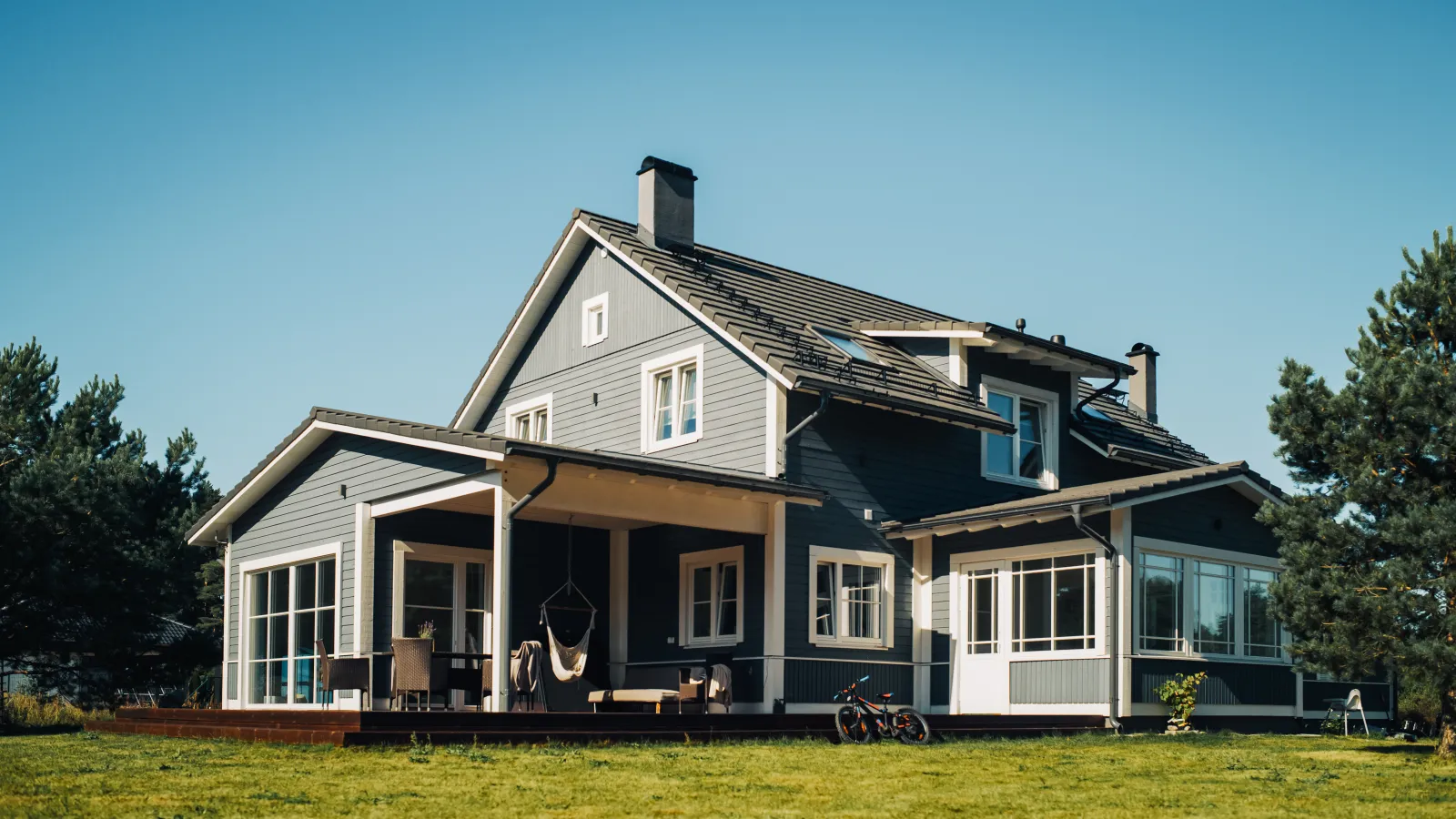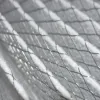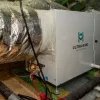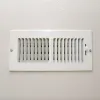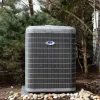If you think indoor comfort is important, then ductwork should matter to you – and it should matter a lot.
Ductwork is right up there with HVAC equipment in terms of its impact on comfort, indoor air quality, and energy efficiency. Many homeowners see bigger gains in comfort from optimizing their ductwork than they ever would by switching out their furnace or air conditioner.
Your home is a system, and ducts are an integral part of that system. When a builder or contractor bungles your ductwork (and they often do!), uncomfortable and unhealthy conditions are the typical result.
That’s why we’re picky about installing new ductwork. The way we see it, the ductwork should never be subject to assumptions, wishful thinking, or rules of thumb. Instead, we use building science as our guiding light.
A few thoughts on good ductwork design
What matters most when designing and installing ductwork for a home? Here are our thoughts:
- Airflow: Optimal airflow is critical to performance and comfort. We determine the proper amount of airflow for every room in your home. Then we take steps to ensure that the ductwork design enables your HVAC equipment to match your airflow needs.
- Leakage: Leaky ductwork creates uncomfortable conditions and drives up your energy bills. A leaky return duct can also lead to poor indoor air quality when it pulls air from your attic or crawl space. For these reasons, we guarantee 5% or less duct leakage for every installation.
- Balance: The static pressure inside your ductwork is like blood pressure in your body. It’s a measure of the amount of air resistance inside your ducts. In a balanced system, there won’t be excessive static pressure – the pressure balance will be sufficient to properly circulate and distribute air throughout your home. Any restrictions in your ductwork can create undue static pressure, something we go to great lengths to avoid.
Few heating and air contractors take the same painstaking measures that we do to ensure proper airflow, balance your system, and minimize leakage. For this reason, having PV Heating, Cooling & Plumbing install your ductwork is rarely the cheapest option. But since HVAC isn’t a commodity service, price probably isn’t your primary concern when installing new ductwork, right?
With those principles in mind, let’s take a look at how PV Heating, Cooling & Plumbing designs and installs new ductwork.
1. Perform a room-by-room Manual J load calculation
We’ve discussed Manual J on this blog before. In addition to revealing the amount of heat loss and heat gain throughout your home, a Manual J load calculation also shows you the proper amount of airflow needed for each room. Airflow is expressed as cubic feet per minute, or CFM.
Does sticking to Manual J take time? Yes, it does. Avoiding Manual J and relying on rules of thumb (like square footage) would be a lot easier. In the short term, it would also be less expensive for our clients.
But over the long term, you might end up spending more to fix your ductwork or replace your equipment with a different system. You’d also be uncomfortable for months – possibly even years. We don’t want that to happen, so we perform the Manual J load calculation every time. Every. Single. Time.
2. Perform Manual S, Manual T, and Manual D calculations
Wait! Do other “manual” HVAC methodologies terminate in individual letters of the alphabet? Yep, there sure are.
- Manual S: This helps us select the right HVAC components. About ductwork, Manual S matters because it ensures that you end up with ducts capable of heating and cooling your home during winter and summer temperature extremes.
- Manual T: What types of air registers (vents) do you need? Where should the registers be located? How big should they be? Manual T answers these questions for us. At PV Heating, Cooling & Plumbing, we always use high-velocity registers, regardless of their size or location, because enable better airflow.
- Manual D: Here’s the part where we determine what distances your ducts should cover, how many turns they ought to have, and what volume of air should ideally flow through the ducts to meet the needs of each room per Manuals J, S, and T.
We use meticulous measurements and specialized software to do all of this preliminary work. Failing to go through these critical steps will leave you with a “typical” system of unbalanced ductwork and inadequate airflow throughout your home.
3. Install hard pipe trunk lines with flexible connectors
After going through the trouble to design optimal ductwork, we want to be sure you achieve the proper airflow throughout your system. For this reason, we usually install hard pipe trunk lines with flexible connectors instead of all-flex systems. We also prefer metal plenums to duct boards. If your system is really small, all-flex might be fine for achieving proper airflow. With hard pipe, great airflow is almost a sure thing.
It is more difficult and more expensive for us to do things this way, but the benefits are undeniable.
For starters, hard pipe ducts enable the right airflow delivery to each room. With all-flex ductwork, it’s difficult to install a long run without introducing airflow restrictions – especially in places where you have to hang the duct.
Unless it’s installed perfectly, flex duct sags. Those saggy spots inhibit airflow. Flex ducts are also more subject to damage and might not last as long as hard pipes.
Anyway, this is the part where we put everything where it’s supposed to go. Depending on the project, it can take a while and be pretty messy! We always clean up our mess – every tool, every scrap.
4. Test for leakage and balance
As soon as everything is installed, we test the system to make sure everything works correctly. And we’re not just talking about switching on the heat, standing under a vent, feeling air, and calling it good.
Nope – we test everything the right way. That means pressurizing the system the same way we do during an energy assessment to determine duct leakage. Most systems we test during our assessments have anywhere from 20% to 40% duct leakage, which is a shame. We feel that anything over 5% means something is wrong, and we’ll go back and fix it before declaring the work complete.
We guarantee 5% or less duct leakage with every new ductwork installation. Nobody else that we’re aware of offers that guarantee.
The other thing we test for is balance. To do that, we use a digital hood to measure the airflow and match each room’s airflow to the results of the Manual J load calculation. Airflow should be spot-on in every room.
We also guarantee the proper static pressure for your duct system. Excessive static pressure puts extra stress on equipment and leads to early system failure. You don’t want that, and neither do we.
Thanks to all of the preliminary work we do at the beginning plus proper installation using quality materials, you’ll never have too few ducts, restricted ducts, or ducts that are too small to meet your needs.
Your ductwork will just work.
And it’ll work well! All too often, we hear complaints about uneven temperatures among rooms, high energy bills, and equipment that seems to run all the time without really improving comfort. Poor ductwork isn’t the only reason you might be having those problems, but it’s a common reason.
Proper ductwork design and installation are difficult to work on and require special training. Anyone who says otherwise either never learned how to do it never tested their work for balance or leakage or thinks they can get away with sub-par workmanship.
The way we see it, good ductwork is good business. That’s the PV Heating, Cooling & Plumbing way. In our experience, it’s also been the best way.
